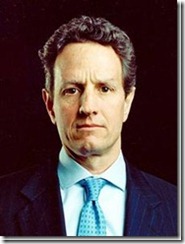 Regular readers know that I’m not a big fan of Treasury Secretary Geithner.
Regular readers know that I’m not a big fan of Treasury Secretary Geithner.
But after poorly-conceived governmental programs subsidizing mortgage loans played a not insubstantial part in the worst financial crisis in a generation, this recent NY Times article left me speechless for a few days:
Treasury Secretary Timothy F. Geithner, speaking Tuesday at a conference to discuss the possibilities [of reforming the government’s role in housing finance], made clear that the administration was not pondering such radical kinds of surgery as it develops a proposal it hopes to unveil in January.
Rather, Mr. Geithner and the conference after his remarks focused largely on drafting a new and improved version of the current system, in which the government subsidizes mortgage loans made by private companies.
Mr. Geithner said continued government support was important to make sure that Americans can borrow at reasonable interest rates to buy a house even in a downturn. The absence of such support, Mr. Geithner said, would deepen future recessions because unsubsidized private companies would curtail lending.
I mean really. After what we’ve been through, why on earth should the government be involved in mortgage markets in any respect?
Government intervention in mortgage markets is simply a thinly-disguised redistribution of income. But even if you think government should be doing such things, creating moral hazard in mortgage markets is a very costly way to accomplish that goal.
Stated simply, the social benefits of home ownership result from homeowners building equity in their homes through saving and enhancing neighborhoods. Those social benefits are not generated from homeowners who borrow excessively to speculate on housing in which they have no equity.
As with proponents of publicly-financed sports stadiums, proponents of such redistribution policies should simply make their case that redistribution is sound public policy and not disguise it in expensive mortgage subsidies. They don’t because of fear that voters would reject such a redistribution policy if they came to understand the true cost of these subsidies.
Truth in advertising in politics is rare, indeed.





 Could it be that folks are finally realizing that old-fashioned greediness really
Could it be that folks are finally realizing that old-fashioned greediness really 


